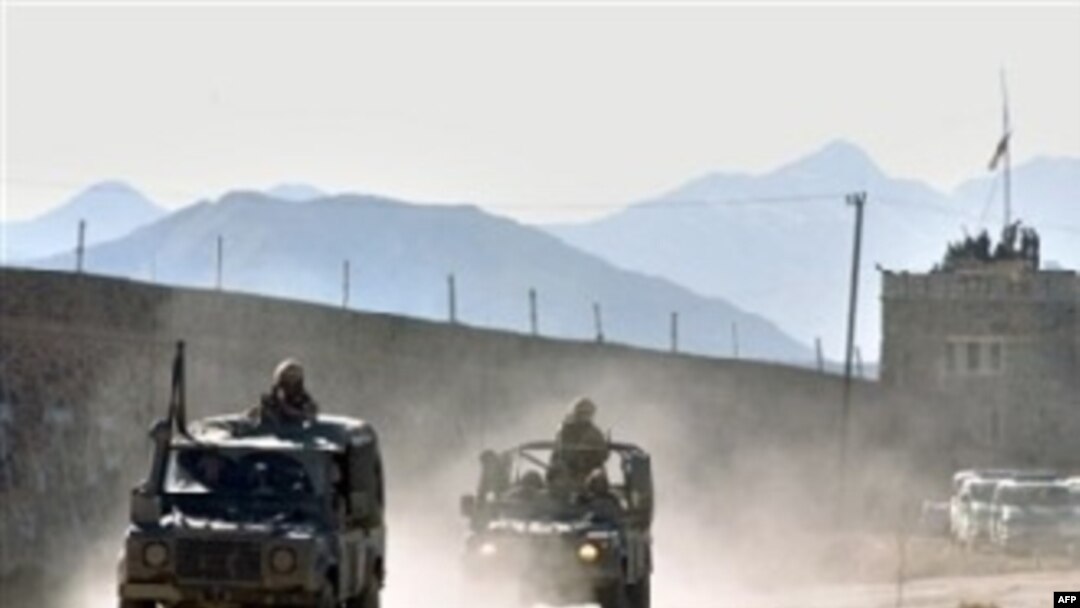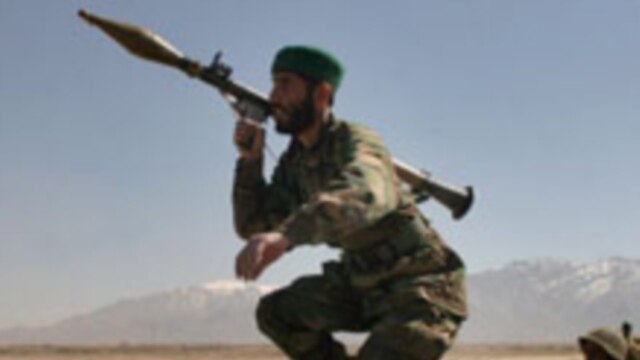One that has now been answered is how many people were killed when prisoners seized a wing of the high-security prison and during the subsequent standoff with Afghan security forces. Early reports indicated that five died and over 20 were injured, but the International Committee of the Red Cross (ICRC) has told RFE/RL that the current death toll is six. That figure may rise, though, as two of the 22 injured are in a critical condition.
Broader questions -- such as who instigated the riots and why -- have not been independently corroborated. But what the standoff will do is to return attention to the government's reconciliation program aimed at ending the neo-Taliban insurgency and the impact on future dealings with captured militants.
A Troubled History
That problems should arise at Pol-e Charkhi was in itself perhaps not a surprise, as twice in a little over a year there had been serious incidents at the prison. In December 2004, foreign prisoners attacked guards with razor blades. A subsequent shoot-out left one Iraqi and three Pakistani prisoners and four Afghan police dead.
Then, this January, seven prisoners escaped from Pol-e Charkhi, apparently by mingling with visitors. Some reports indicated they had links to the neo-Taliban or Al-Qaeda; the prison's governor, General Abdul Salam Bakhshi denied that, calling them unimportant prisoners.
It was a measure introduced to prevent a further prison break -- the introduction of orange uniforms to make prisoners distinguishable from visitors -- that, according to Deputy Justice Minister Mohammad Qasim Hashimzai, triggered the riots on February 26.
Hashimzai says the prisoners attacked their guards after refusing to wear the uniforms.
It is not clear who caused the deaths and injuries. When asked by RFE/RL whether the casualties were the result of the force used by the prison authorities, Olivier Moeckli of the ICRC said that "of course" there were "a few assaults against prisoners," adding that the use of force was restricted "mainly" to the first evening.
It is also not known why, on February 28, some prisoners resumed their violence after the chief negotiator, Sebghatullah Mojaddedi, had persuaded prisoners to allow the wounded and dead to be taken from the prison. Deputy Justice Minister Hashimzai speculated that the prisoners were receiving instructions from outside via mobile phones. It is not clear how prisoners at Pol-e Charkhi could have obtained phones.
The authorities themselves have been unambiguous about whom they believe instigated the uprising. The commander of Kabul police department's rapid reaction police force, General Mahbub Amiri, on February 28 said it was "clear" that "some Taliban and Al-Qaeda prisoners wanted to create chaos and escape." That was a view echoed by Hashimzai, who said that around 350 Taliban and Al-Qaeda inmates had been among the roughly 1,000 prisoners reportedly involved in the riot. The rioters are said to have shouted slogans against the United States and Afghan President Hamid Karzai.
The Reconciliation Program And Neo-Taliban Prisoners
While Mojaddedi did not go into details about who spearheaded the riots at Pol-e Charkhi, his presence as the head of the government's negotiating team could be viewed as a clue that the prisoners' leaders were in some way linked with the neo-Taliban. Mojaddedi, who is the speaker of the Council of Elders, the upper house of the National Assembly, also serves as the chairman of the Commission for National Reconciliation, which is trying to end the neo-Taliban insurgency by inviting militants to make peace with the government. (Mojaddedi was not the only name to be put forward by the prisoners; some wanted a pro-Karzai deputy and others the speaker of the People's Council of the National Assembly, Mohammad Yunos Qanuni, to act as negotiators.)
The prison does not hold the most of the more dangerous known Al-Qaeda members. Those remain in U.S. custody at the Bagram air base north of Kabul. The Afghan government is, though, increasingly taking charge of captured neo-Taliban combatants.
Among the prisoners' complaints were poor living conditions. In a report published in 2005, a UN-appointed independent expert mandated to review the human rights situation in Afghanistan, M. Cherif Bassiouni, described the conditions at Pol-e Charkhi prison as "sub-standard." Bassiouni complained that prisoners are "inappropriately shackled" in overcrowded cells, and also about "inadequate sanitation, open electrical wiring, and broken and missing windows during freezing temperatures."
Following the riots, though, the prisoners have now had to be moved to a wing of the prison where conditions are worse, says the ICRC's Olivier Moeckli. "The ICRC had worked and assisted the authorities in repairing the wings where the prisoners were held," he said. "Now…they are in a wing where quite heavy work needs to be done."
Some of the grievances were "reasonable," Mojaddedi said.
Controversially, he included in that list complaints "against prosecutors, judges, and the prison officials and about being jailed for no reason."
By legitimizing some of the grievances of the prisoners against prosecutors and judges and effectively stating that some of the prisoners have been incarcerated for no reason, the Commission for National Reconciliation opens the door for suspected anti-government militants to claim clemency through the reconciliation program even after they are captured in action. The danger is that this could prolong the insurgency.
Given the dismal state of the judicial system and prisons in Afghanistan, both Mojaddedi and the prisoners may, of course, have a legitimate point to make.
What the Pol-e Charkhi crisis should do is to bring the attention of the Kabul government and its international backers to the urgent need to turbo-charge the process of revamping Afghanistan's judicial system from top to bottom.
RFE/RL Afghanistan Report
SUBSCRIBE For regular news and analysis on Afghanistan by e-mail, subscribe to "RFE/RL Afghanistan Report."



